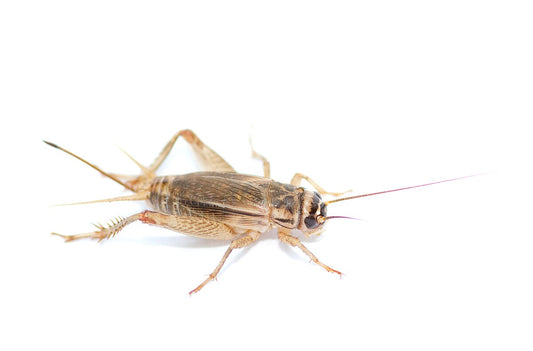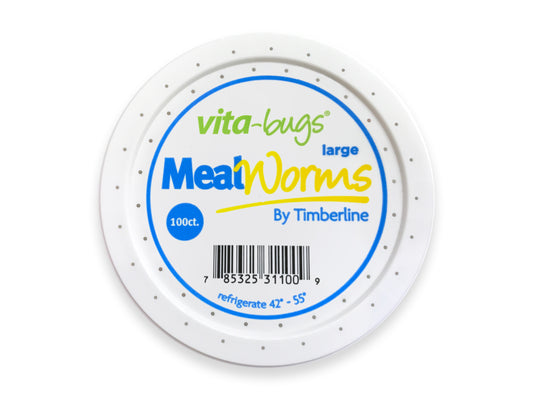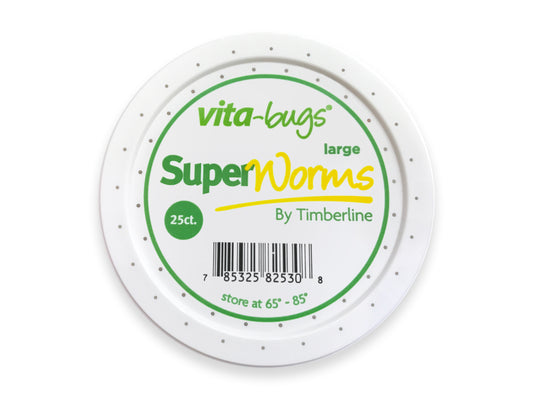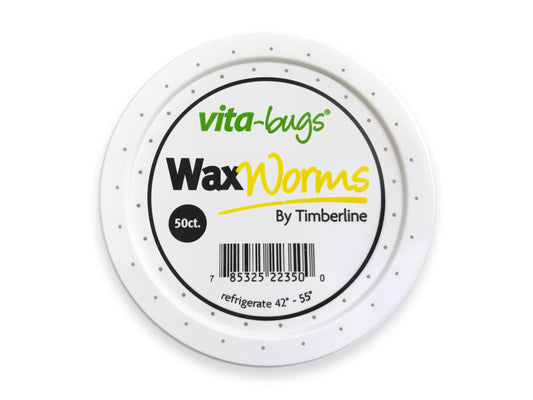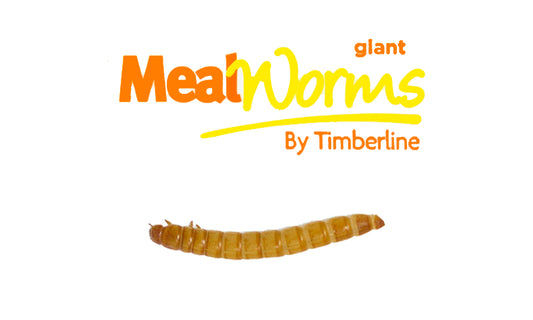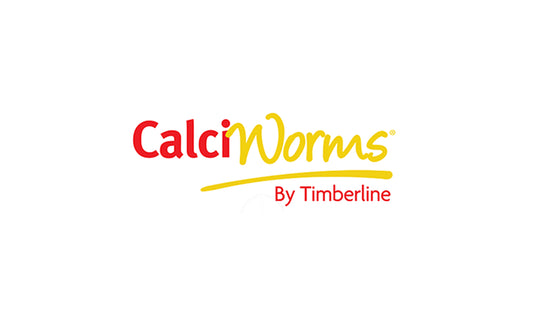Collapsible content
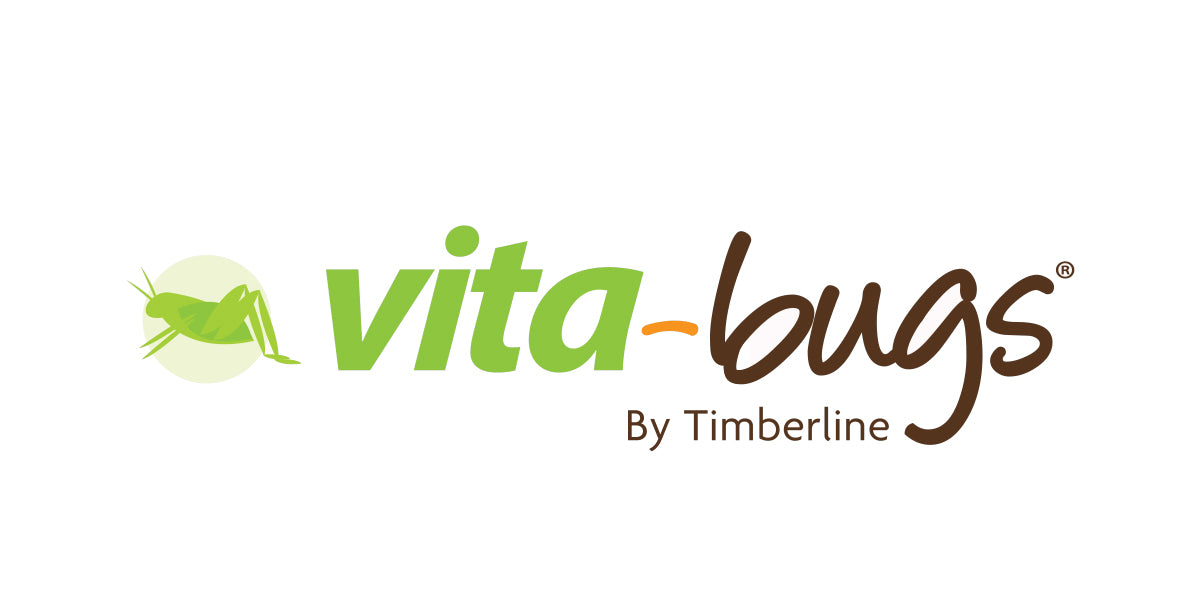
Why choose Vita-Bugs®?
Currently commercial insect are primarily raised for rapid growth using the lowest cost ingredients. As a result insect diets do not contain the same nutrients that wild insects would naturally consume. Vita-Bug® insects are fed a modified diet to increase their nutritional content to be more in line with wild insects.
Insect Dusting and Insect Gut-Loading
Insect Dusting – Dusting insects to provide additional nutrients can lead to inconsistent results since factors such as grooming, the time between dusting and feeding, the palatability of the dust and the particle size of the dust itself all effect how much is actually consumed. In a recent study crickets groomed off over 50% of the dust applied to it within 2.5 minutes (Li et al 2009). So delivering a specific amount of nutrients is a challenge when relying on dusting.
Insect Gut Loading -While properly formulated gut-loading diets can enhance the value of feeder insects many commercial gut-loading diets either do not contain sufficient nutrients, they use the wrong forms of some nutrients or they are relatively unpalatable meaning the nutrients don’t get eaten (Finke et al 2005). So again unless the gut-loading diet is proven through published research it is difficult to determine if a particular gut-loading diet delivers the right nutrients in the right form for the insectivore.
The Solution...Vita-Bugs®
After more than 7 years of research and development the Vita-Bug® process has been created. Vita-Bugs® feeder insects are grown using a scientifically formulated diet with enhanced nutrient content that enhances the nutrient content of the insect’s tissues. Vita-Bug® crickets, superworms, mealworms and waxworms contain nutrients more like those found in wild insects (Finke 2015). It is important to note that this process changes the internal make-up of the insects so it is NOT an applied process that quickly “wears off”.
Retinal is a form of Vitamin A, and as you can see the effect of the Vita-Bug® process begins very quickly. The reason the small cricket contains more vitamin A is because insects store these compounds in their eyes and smaller crickets have a proportionally larger eyes than adult crickets.
Many zoos report that the biggest nutrient deficiency that they experience is a Vitamin A deficiency. So as you can see Vita-Bugs® have a Vitamin A/retinal levels comparable to that seen in wild grasshoppers.
The below image shows the amount of Vitamin E in wild caught, commercially raised and Vita-Bug® insects. As you can see typical commercially raised insects contain little Vitamin E. This is because Vitamin E is expensive therefore just enough is added to the diet for the insect to grow correctly but not enough for additional storage. In contrast as you can see the Vita-Bug® insects have Vitamin E levels similar to that seen in wild caught insects carrying on the theme of making the nutrient content of commercial insects more like that of wild insects.
In a study conducted in England with red-eye tree frogs (Agalychnis callidryas) researchers found that when carotenoids were provided to tadpoles they had a positive influence on development, adult frog coloration and reproduction (Oglivy et al 2012).
Additionally when Tomato frogs (Dyscophys guineti) were fed crickets that were enhanced with various carotenoids they had a more natural coloration and improved vitamin A status (Brenes Soto and Dierenfeld, 2014).
What are carotenoids? Carotenoids are naturally occurring compounds that are responsible for the coloration many of these foods we are eat. The red in tomatoes is the result of a carotenoid called lycopene, the yellow in corn is from the carotenoids lutein and zeaxanthin and the orange in carrots is from the carotenoid beta-carotene.
In addition to their role in enhancing the color of many species of animals, carotenoids also play a role in immune health in many species of animals and also serve as a source of vitamin A in both Tomato frogs and Mississippi gopher frogs (Brenes Soto and Dierenfeld, Ploog et al 2015).
What does this all mean?
For a long time now we have all heard about premium food choices for dogs and cats, now it’s time for reptiles and amphibians to have the same options.
It is still important to stress variety when feeding reptiles and amphibians. For example we can supplement an insectivore’s diet with more fat by feeding waxworms or mealworms. Most importantly reptile owners need to understand they still must supplement their pet’s diet with calcium. Crickets and most other feeder insects do not accumulate much calcium so an additional calcium source is needed. So how do we solve this? While dusting and gut-loading are options we think a better way is to add CalciWorms to their diet.
CalciWorms naturally contain high levels of calcium which is still needed in the Vita-Bug® diet program. So a staple diet of Vita-Bug® crickets, superworms or mealworms can be enhanced with calcium from CalciWorms. So this means that using a correct combination of Vita-bugs® and Calciworms and providing proper lighting means there is no need for dusting or gut-loading thereby naturally supplying your reptile with all the nutrients they need.
References
Brenes‐Soto A, Dierenfeld ES. 2014. Effect of dietary carotenoids on Vitamin A status and skin pigmentation in False Tomato Frogs (Dyscophus guineti). Zoo Biology 33: 544–552.
Eeva T, Helle S and Salminen JP. 2010. Carotenoid composition of invertebrates consumed by two insectivorous bird species. Journal of Chemical Ecology 36:608-613.
Finke MD. 2002. Complete nutrient composition of commercially raised invertebrates used as food for insectivores. Zoo Biology 21: 269-285.
Finke MD, Dunham SU and Kwabi CA. 2005. Evaluation of four dry commercial gut loading products for improving the calcium content of crickets, Acheta domesticus. Journal of Herpetological Medicine and Surgery 15:7-12.
Finke MD. 2013. Complete nutrient content of four species of feeder Insects. Zoo Biology 32:27-36.
Finke MD. 2015. Complete nutrient content of four species of commercially available feeder insects fed enhanced diets during growth. Zoo Biology 34:554-564.
Li H, Vaughan MJ, Browne RK. 2009. A complex enrichment diet improves growth and health in the endangered Wyoming Toad (Bufo baxteri). Zoo Biology 28:197-213. Zoo Biology 32:27-36.
Livingston S, Lavin SR, Sullivan K, Attard L and Valdes EV. 2014. Challenges with effective nutrient supplementation for amphibians: A review of cricket studies. Zoo Biology 33:565–576
Ogilvy V, Preziosi1 RF and Fidgett AL. 2012. A brighter future for frogs? The influence of carotenoids on the health, development and reproductive success of the red-eye tree frog. Animal Conservation 15:480-488.
Pennino M, Dierenfeld ES and Behler J. L. 1991. Retinol, alpha-tocopherol, and proximate nutrient composition of invertebrates used as food. International Zoo Yearbook 30: 143-149.
-
Crickets-Bulk
Regular price From $18.00 USDRegular priceUnit price / per -
Giant Mealworms-Cup
Regular price From $2.49 USDRegular priceUnit price / per -
Mealworms-Cup
Regular price From $1.99 USDRegular priceUnit price / per -
Superworms-Cup
Regular price From $2.99 USDRegular priceUnit price / per -
Waxworms-Cup
Regular price From $3.99 USDRegular priceUnit price / per -
Giant Mealworms-Bulk
Regular price From $13.25 USDRegular priceUnit price / per -
Mealworms-Bulk
Regular price From $10.05 USDRegular priceUnit price / per -
Calciworms-Cup
Regular price From $2.99 USDRegular priceUnit price / per
